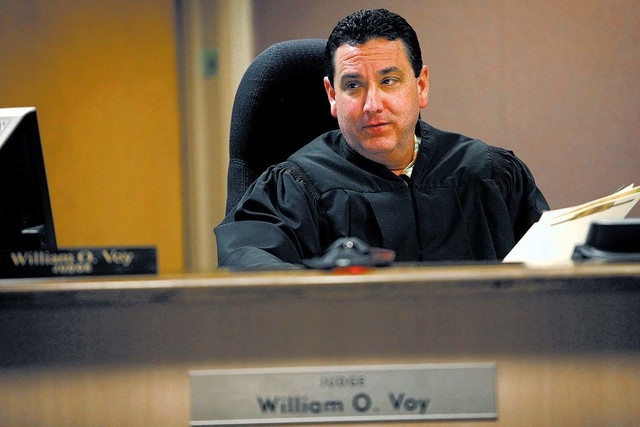ACLU opposes ‘hogtying’ at juvenile detention centers
If hogtying is being used to restrain juveniles at state-run facilities, the practice needs to stop immediately, a member of the American Civil Liberties Union of Nevada said Friday.
Concerns that juveniles were being restrained by having their hands and feet bound together behind their backs at the Nevada Youth Training Center in Elko prompted Family Court Judge William Voy on Wednesday to order the removal of all Clark County offenders from the facility and have them transported to Southern Nevada.
“There is no justification for hogtying someone as a punishment,” Allen Lichtenstein, general counsel for the ACLU. “It’s not even justified as a restraint.”
Voy issued the order after a Wednesday hearing. Officials had received reports of a police restraint procedure called “hobbling” being used at the Elko facility. Concerns that the technique is used at the Caliente Youth Center also were raised during Wednesday’s hearing.
“Even though the identified restraint, which ensures appropriate safety of the youth and staff, adheres to American Correctional Association requirements, it has not been used at the (Elko facility) since December 2013,” according to a Friday statement from Mary Woods, spokeswoman for the Nevada Department of Health and Human Services, which oversees the juvenile facilities.
Regardless, state staff will respond to Voy’s verbal order by relocating the youth as soon as possible, she said.
The order affects 12 Clark County juveniles who were expected to arrive in Southern Nevada today. Four of them are scheduled to be released next week.
Through his assistant, Voy said he couldn’t comment Friday because the court action is on-going.
This is a concern because the purpose of these facilities is to benefit and help the youth, Lichtenstein said.
“The idea that minors are being hogtied as punishment, if that in fact is the case, would be a significant violation of constitutional dimensions,” he said.
According to an Aug. 5, 2013, incident report from Elko staff members, “A youth was instructed to lay in the prone position and did so without incident.” Staff “entered the youth’s room and placed the youth in a belly chain, ankle restraint and then continued by placing the handcuffs on the youth in order to connect the leg irons and belly chains for the hobbles restraint.” Staff “moved the youth to the back of the room. We then exited the room.”
If the measure is part of policy and practice at the facilities, “there would be a significant question of liability. But more importantly, it’s a practice that needs to stop immediately,” Lichtenstein said.
However, this practice might be more common than people think.
Melissa Sickmund, director of the Pittsburgh-based National Center for Juvenile Justice, said there are a number of facilities that use “mechanical restraints.” The hogtie would fall into the category of mechanical restraints, which can involve handcuffs, leg cuffs, waist bands, leather straps, and restraining chairs.
The center is the research division for the National Council of Juvenile and Family Court Judges, which is based in Reno.
“It’s not that I like it, but that’s reality. It does occur,” Sickmund said on Friday.
About one in four U.S. juvenile facilities reported using mechanical restraints, and one in five reported locking youth in some type of isolation, according to the 2010 Juvenile Residential Facility Census by the Office of Juvenile Justice and Delinquency Prevention. The report analyzed data from 2,111 facilities across the country.
“Advocacy groups have been promoting doing away with those things, especially with young kids,” Sickmund said.
Assistance is available from national experts to provide coaching to juvenile detention centers and can provide other support so facilities don’t have to rely on mechanical restraints, she said.
“It shouldn’t be a constant occurrence,” Sickmund said.
Contact Yesenia Amaro at yamaro@reviewjournal.com or 702-383-0440. Find her on Twitter: @YeseniaAmaro.




























